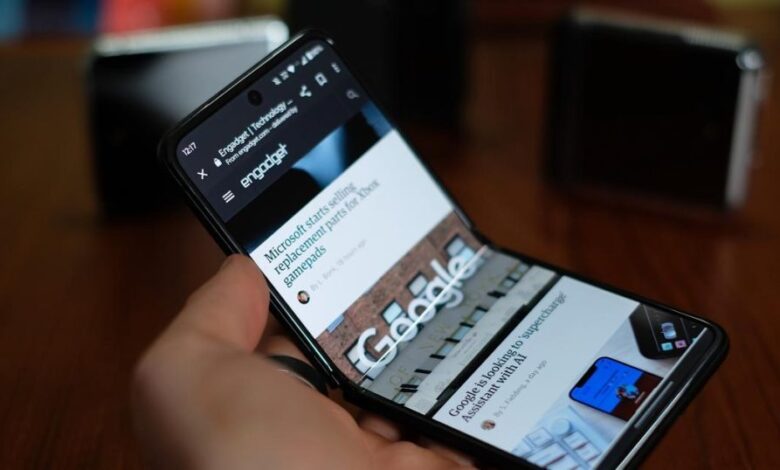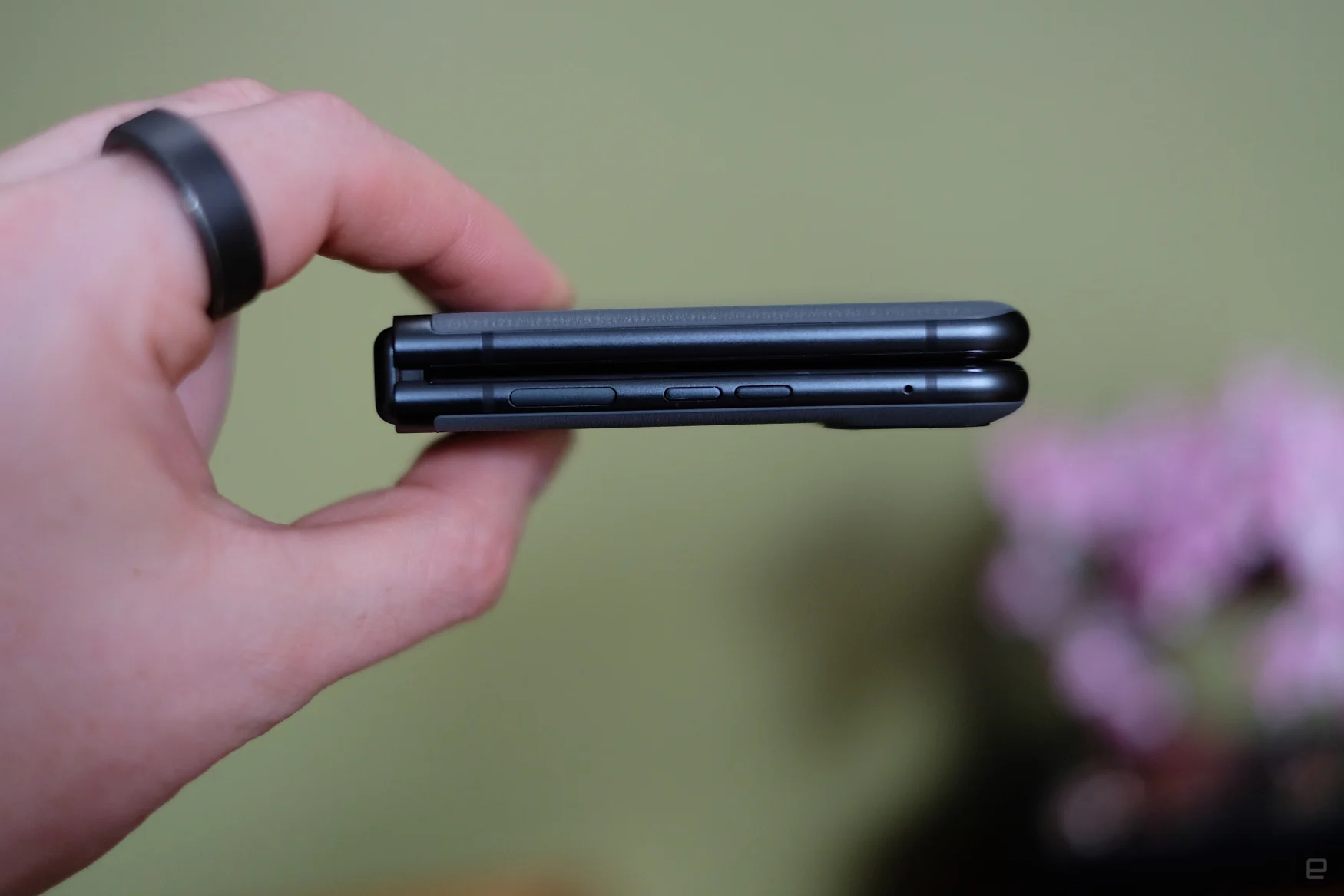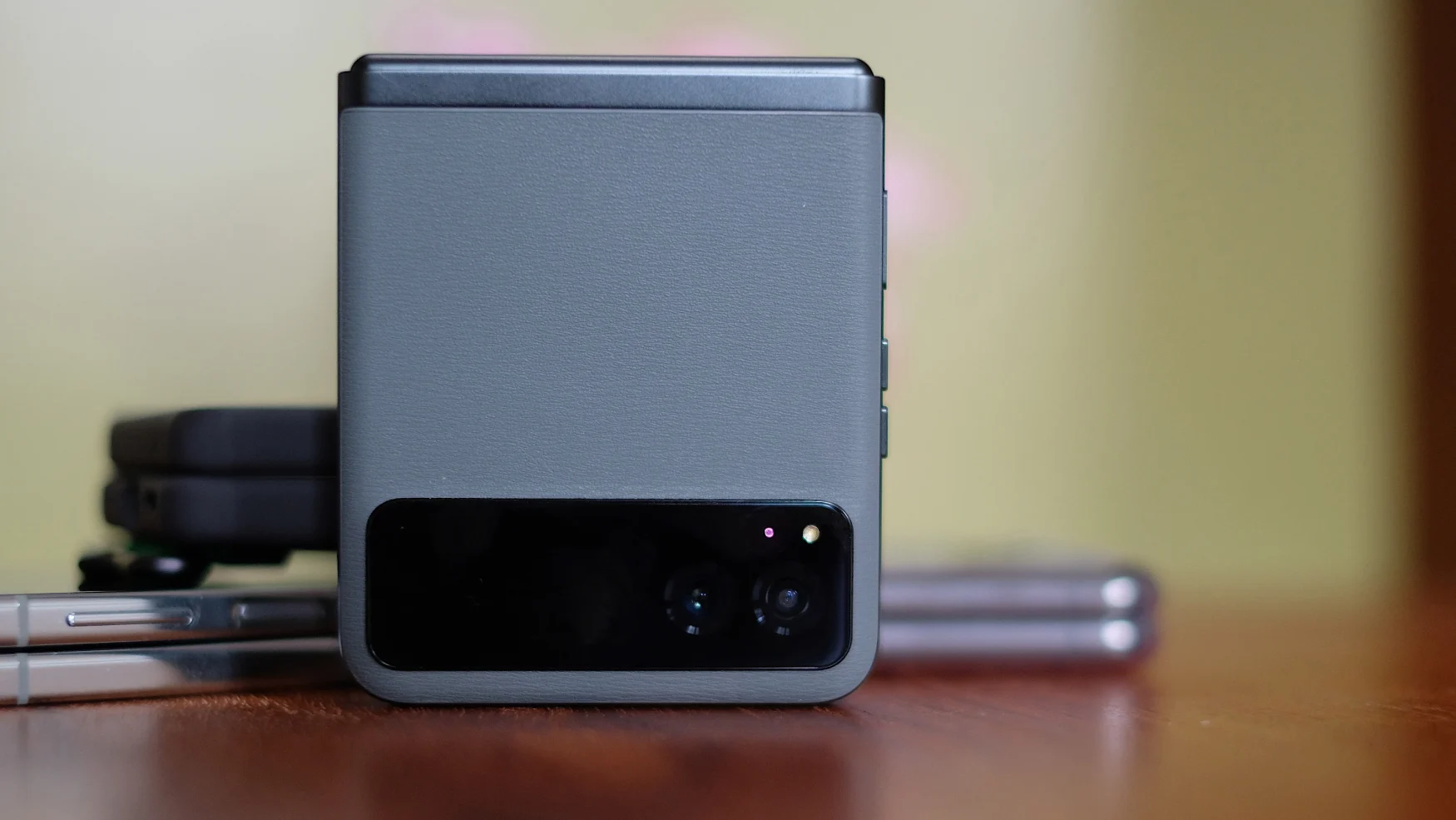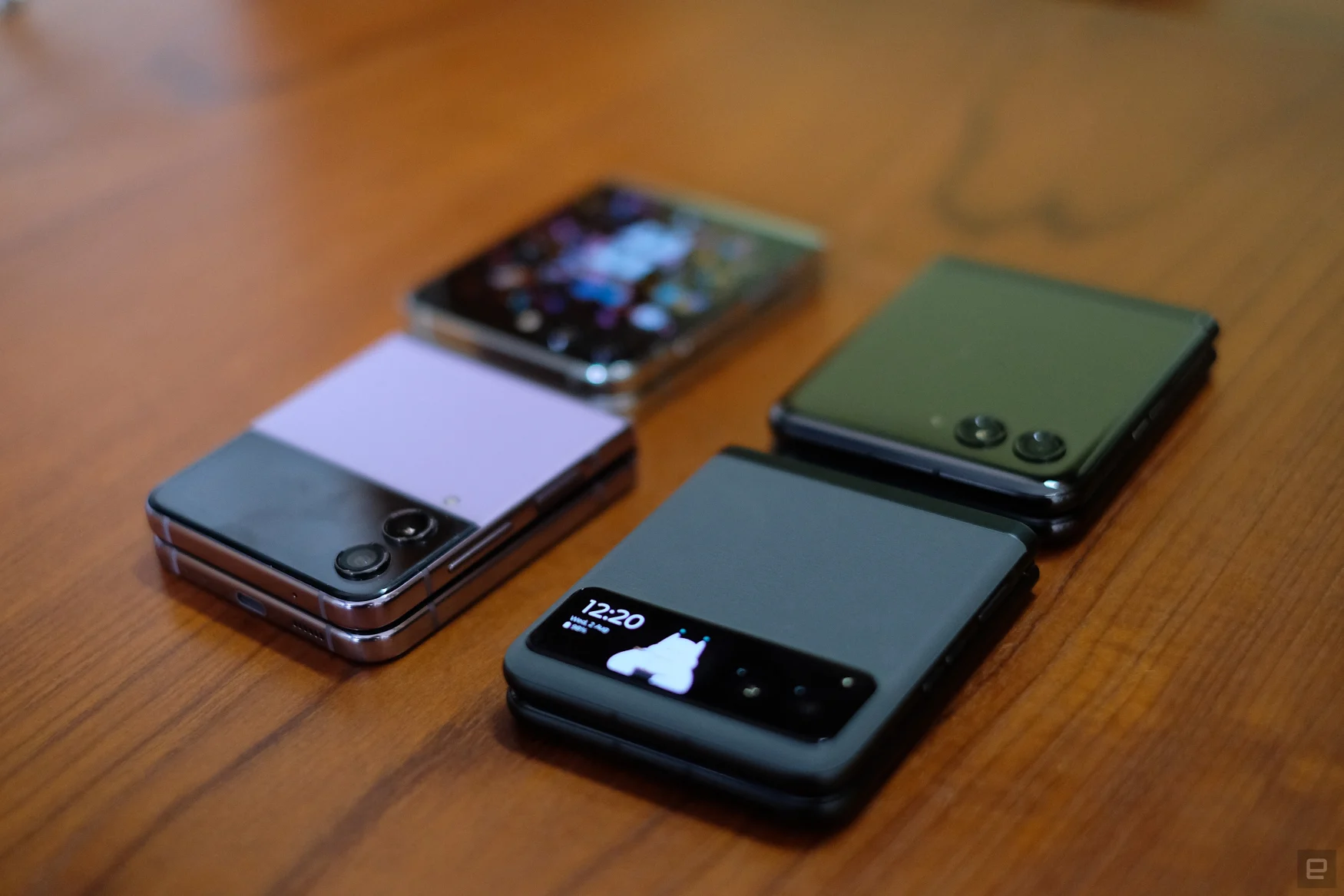Motorola Razr (2023) evaluation: A midrange foldable that underwhelms

While Motorola’s pricier Razr+ beat Samsung’s Galaxy Z Flip 5 to the punch with its expansive exterior show, the Razr (named the Razr 40 in different areas just like the UK) was pitched as a extra budget-friendly foldable. For now, pricing and availability within the US haven’t been confirmed, however within the UK it’s priced at £800 (roughly $1,025) whereas the Razr+ retails at £1,050 within the UK and $999 within the US.
The brand new Razr is cheaper, however it’s additionally extra restricted. In display screen phrases, it is comparable with foldable telephones from a number of years in the past. However it has an even bigger battery and seemingly higher cameras. Because the fanfare from Samsung’s Unpacked reveal dies down (and we become familiar with the Z Flip 5), the Moto Razr begs the query: What do you actually get from a less expensive foldable cellphone?
Motorola
Motorola Razr (2023)
Execs
- A less expensive foldable cellphone
- First rate battery life
- tactile mushy end
Cons
- Unremarkable exterior display screen
- Underwhelming cameras
Design and shows
Let’s begin with some Razr household resemblances. Each the Razr and Razr+ have the identical physique and inner versatile 6.9-inch show, and there’s no extra Razr ‘chin’ on both system. No corners have been minimize on the foldable display screen, with a crisp 413 pixels per inch and as much as 1,400 nits of brightness. This can be a flagship show. Internally, at the least.
Nevertheless, the cheaper Razr has a a lot smaller 1.5-inch exterior panel, which places it someplace between Samsung’s authentic Z Flip and the Z Flip 3. You already know it can really feel constrictive when it’s smaller than the primary two Samsung flip smartphones. That is all exacerbated by the truth that its personal sibling the Razr+ has a 3.6-inch exterior display screen.
The Razr’s panel takes up about 20 % of the decrease entrance of the system, with a 64-megapixel and 8MP digicam duo to its proper. It has an IP52 ranking, which is healthier than nothing, however received’t shield in opposition to greater than a weak splash or mild rain.
I do just like the Razr’s vegan, fake leather-based texture, a lot in order that regardless of my worry of breaking or damaging foldable gadgets, I risked utilizing the cellphone with out the exhausting shell case that got here within the field. I significantly appreciated the grey-green sage colorway, too. Just like the Razr+, Moto’s middleweight cellphone folds utterly closed, with no gaps when it from the facet.

Photograph by Mat Smith / Engadget
The small exterior display screen is proscribed to fundamental cellphone capabilities. You possibly can swipe sideways by your calendar, climate forecasts, whereas a drag up from the clock will present all of your notifications. Swiping down will get to fast toggles for issues like WiFi and Bluetooth. It’s purposeful, however just a little dated. That is what we received with the very first flip smartphones; I would like just a little extra. Even in comparison with final yr’s Z Flip 4 — prone to be discounted to an analogous worth as this Razr now that its successor is right here – Samsung’s system provides extra to do and see on its exterior display screen.
The Razr’s second display screen is most useful if you’re utilizing exterior cameras for selfies. Double urgent the facility button quick-launches the digicam app, and you may faucet to seize photos with a timer, swipe up and down to modify between the ultra-wide and customary lenses and swipe sideways to swap between video, photograph and portrait modes. You possibly can even summon a cartoon character to distract youngsters when taking photographs, in each unfolded and folded modes.
The Razr’s 2,640 x 1,080 display screen can refresh at as much as 144Hz, just a little shy of the Razr+’s 160Hz. That mentioned, when you’re coming from smartphones with refresh charges of 90Hz or much less, you’re nonetheless going to sense the improved smoothness. The panel is vivid, responsive — it’s a smartphone display screen. Anybody serving within the Crease Police, sure it’s there, however in comparison with older foldables, operating your finger over it doesn’t really feel prefer it’s testing the display screen’s sturdiness. Foldable hinges (and the screens protecting them) proceed to get higher however when you’re on the lookout for seen hints of a folding show, they’re nonetheless there.
Efficiency and software program
With a Snapdragon 7 Gen 1 chip, the Razr exhibits its midrange hand just a little. It’s not a flagship processor, however this isn’t a flagship foldable. I observed the Razr lagged just a little once I was attempting to edit a prolonged video file, however it will definitely managed to finish the duty.
A nice shock with this Razr was its 4,200mAh battery. That is a lot bigger than the three,800mAh battery within the Razr+ and the Galaxy Z Flip 4’s 3,700 mAh cell. In our video rundown take a look at, it lasted simply past 18 hours, three hours longer than the Razr+ and higher than final yr’s Z Flip 4.
 Photograph by Mat Smith / Engadget
Photograph by Mat Smith / Engadget
The Razr also can fast-charge at 30W with the included adapter included (outdoors of the US at the least). I used to be in a position to get the Razr to succeed in one hundred pc in below an hour. There’s additionally help for slower 5W wi-fi charging, however alas, no reverse charging, when you had been hoping to high up any wi-fi earbuds.
I’ve already famous the restricted utility of the Razr’s exterior show, however software-wise it’s simply not ok. Customization choices solely lengthen to totally different fonts and colorways for the clock. It’s particularly jarring provided that we all know Motorola is able to extra, due to the Razr+.
Cameras
One of many huge spec variations between Motorola’s duo of foldables this yr are the cameras. Whereas the Razr+ has a pair of 12MP cameras just like the Galaxy Z Flip collection, the usual Razr has a 13MP wide-angle lens alongside a 64MP major lens with optical picture stabilization. Ah, so this will probably be the place the Razr shines, proper? Sadly, no.
Gallery: Motorola Razr (2023) digicam samples | 7 Images
In virtually each shot I took, the Razr didn’t attain the requirements of the Razr+ and even final yr’s Galaxy Flip 4. Motorola’s claims of ultra-fast and correct laser auto-focus don’t actually bear out in actuality, particularly with video. The Razr twitches and struggles to maintain constant focus. I struggled to see many photos the place the 64MP sensor outperformed the pricier gadgets, both. I wasn’t getting notably extra element, in truth I used to be getting much less. Seems, until you activate high-res seize mode (which is hidden away within the furthest reaches of the digicam’s menu), the first 64MP sensor is aggressively pixel-binned, stripping away element with out bettering total picture high quality all that a lot.
Wrap-up
 Photograph by Mat Smith / Engadget
Photograph by Mat Smith / Engadget
Are foldables going to be the brand new smartphone regular? Uncertain. Motorola’s bid for a less expensive (if not that less expensive) flip cellphone tries to broaden their attraction, however sadly misses the mark. Its exterior show merely lacks sufficient utility in 2023. And I’m unsure who’s keen to spend this a lot cash on a cellphone that is already two years behind the curve.
Nevertheless, Motorola has but to announce pricing or a launch date within the US. If the Razr had been to value $800 or decrease, which might be nearer to a Galaxy S23 or iPhone 14, it may discover an viewers. However for most individuals intrigued by a foldable flip-phone, they’d be higher served searching down a reduced Galaxy Z Flip 4.
#Motorola #Razr #evaluation #midrange #foldable #underwhelms




